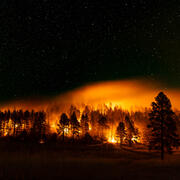Riparian
Riparian ecologists in the AS Branch study interactions among flow, channel change, and vegetation along rivers across the western United States and worldwide. Our work focuses on issues relevant to the management of water and public lands, including dam operation, climate change, invasive species, and ecological restoration. Investigations take place on a range of scales. For example, experimental studies in pots and growth chambers detect genetic, phenotypic, and species variations in response to environmental conditions, such as drought, frost, mycorrhizal inoculation, salinity, and carbon dioxide enrichment.













